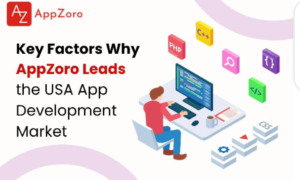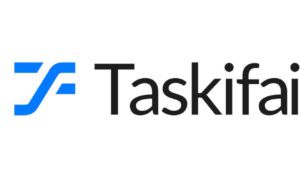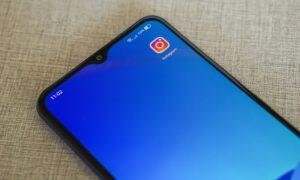In app development, effective requirements gathering stands as the cornerstone of success. By comprehensively understanding user needs, preferences, and expectations, developers can craft applications that resonate deeply with their target audience. This process not only ensures that the final product meets user demands but also enhances user satisfaction and engagement.
Mobile app requirements gathering forms the bedrock of app development, delineating the roadmap for the entire project. It entails a systematic approach to identifying, analyzing, and documenting user needs, functional specifications, and constraints. By discerning user expectations early in the development cycle, developers can align their efforts with user-centric design principles, fostering enhanced usability and functionality.
There are many methods to gather requirements effectively for software development projects, each tailored to suit diverse project scopes and objectives. These requirements gathering techniques encompass user interviews, surveys and questionnaires, focus groups, prototyping and wireframing, observation and job shadowing, workshops and brainstorming sessions, and document analysis. By using a combination of these methodologies, developers can glean multifaceted insights into user needs and preferences, informing the development process with invaluable clarity and precision.
Interviews to get insights from User stories
User interviews are one of the effective requirements gathering techniques in app development, offering direct insights from potential users. This method helps bridge the gap between developers and end-users, ensuring the final product aligns with user expectations and needs.It aims to understand user feedback, user stories, preferences, and pain points.
Process of Conducting User Interviews
- Preparation: Define interview goals, identify participants, and develop a structured set of questions.
- Conducting Interviews: Engage participants in open-ended discussions, encouraging them to express their thoughts and preferences freely.
- Active Listening: Pay attention to verbal and non-verbal cues, allowing for a deeper understanding of user needs.
- Probing: Ask follow-up questions to delve into specific details and clarify responses.
- Recording: Document responses accurately, either through note-taking or recording, to capture nuances and insights.
Key Considerations
Consider the diversity of the user base, ensuring representation from different demographics. Respect participant privacy and establish a comfortable environment to promote open communication.
Surveys and Questionnaires For Requirements Gathering Process
Surveys and questionnaires serve as invaluable tools in the software requirements gathering phase of app development, enabling developers to gather insights from a broader audience.
Designing Effective Surveys
Designing effective surveys involves crafting clear, concise, and relevant questions that align with the project’s objectives. It’s crucial to consider the target audience and use easily understandable language.
Distribution and Collection of Responses
Distribution methods vary, including email, social media, online platforms, or embedded links within existing apps or websites. Ensuring ease of access and incentivizing participation can improve response rates.
Focus Groups
Focus groups serve as a structured method for gathering qualitative insights and feedback from a diverse set of participants regarding specific topics or issues related to app development.
Composition and Facilitation
Selecting the right participants for focus groups is crucial to ensuring diverse perspectives and meaningful discussions. The composition may include representatives from target user groups, stakeholders, domain experts, and relevant decision-makers. Facilitators play a vital role in guiding the discussion, encouraging participation, managing group dynamics, and ensuring that the conversation remains focused on the topic at hand.
Extracting Insights and Feedback
During focus group sessions, participants are encouraged to share their thoughts, experiences, and suggestions related to the app under development. Through open-ended questions, prompts, and group exercises, facilitators aim to extract valuable insights, identify common themes, and explore divergent viewpoints. Active listening and probing techniques help uncover underlying motivations, preferences, and unmet needs among participants.
Prototyping and Wireframing
Prototyping and wireframing are important steps when gathering requirements for app development, allowing stakeholders to visualize the proposed solution and gather valuable feedback early in the development cycle.
Tools and Techniques for Prototyping
Various tools and techniques are available for prototyping and wireframing, ranging from simple sketching and paper prototypes to sophisticated digital tools such as Sketch, Adobe XD, and Figma. These tools offer features like drag-and-drop interface elements, interactive components, and collaboration capabilities, facilitating the creation of high-fidelity prototypes that closely resemble the final product.
Iterative Development and Feedback
Prototyping and wireframing involve an iterative process where initial designs are refined based on relevant stakeholders’ feedback. Through user testing and usability studies, developers gather insights into user preferences, pain points, and expectations. This iterative approach allows for continuous improvement and ensures that the final product aligns with user needs and expectations.
Incorporating Changes into Requirements
Feedback gathered during the prototyping and wireframing phase informs the refinement of project requirements. As stakeholders provide insights and suggestions, developers assess the feasibility and impact of proposed changes on the app’s functionality and design. Adjustments are made to the requirements document to reflect updated specifications, ensuring that the development process remains aligned with stakeholder expectations and project objectives.
Observation and Job Shadowing
Observation and job shadowing are invaluable methods for understanding user behavior and needs in app development. These techniques provide direct insight into how users interact with systems and perform tasks, offering a deeper understanding of their requirements.
Techniques for Observation
Observation involves carefully watching users as they navigate through tasks, interacting with systems or performing job functions. Techniques include taking notes, recording videos, and using screen capture software to capture user interactions accurately.
Extracting Insights and Requirements
Through observation and job shadowing, developers can extract valuable insights about user behaviors, preferences, and pain points. By closely observing user actions and interactions, developers can identify patterns, bottlenecks, and areas for improvement.
Translating Observations into Functional Requirements
Translating observations into functional requirements involves analyzing the insights gained from observation and job shadowing and transforming them into actionable specifications for app development. This process requires careful documentation and analysis to ensure that the app addresses users’ needs effectively and efficiently. By aligning functional requirements with user observations, developers can create user-centric apps that meet users’ expectations and enhance their experiences.
Workshops and Brainstorming Sessions
Workshops and brainstorming sessions serve as dynamic platforms for gathering requirements in app development projects. They encourage collaboration, creativity, and active participation among stakeholders.
Facilitation and Participation
Effective facilitation is essential to ensure productive workshops and brainstorming sessions. Facilitators guide discussions, encourage equal participation, and manage time effectively. Active participation from stakeholders, including developers, designers, end-users, and project managers, enhances the quality of outcomes.
Ideation and Conceptualization
Participants engage in ideation to generate a wide range of ideas related to app features, functionalities, and user experience. Through brainstorming techniques such as mind mapping, sketching, and idea generation exercises, concepts are explored, refined, and developed.
Prioritization and Consensus Building
Once ideas are generated, prioritization techniques such as voting, ranking, and scoring help identify key requirements and features. Consensus building ensures that stakeholders agree on the most critical elements to include in the app. Collaboration and compromise may be necessary to reconcile conflicting priorities and preferences.
Document Analysis to gather requirements
Document analysis is a crucial component of the requirements-gathering technique in app development, aimed at extracting valuable insights and clarifying project objectives.
Document analysis is to comprehensively review existing documentation related to the app development project. This includes project charters, business requirements documents, technical specifications, user manuals, and any other relevant materials. It is done to gain a thorough understanding of the project scope, identify key stakeholders, discern business objectives, and uncover any constraints or dependencies.
Reviewing Existing Documentation
During the review process, analysts carefully examine each document to extract pertinent information regarding user needs, functional requirements, technical specifications, and project constraints. They pay close attention to details such as user stories, use cases, system architectures, and data flow diagrams to gain insights into the project’s intricacies.
Identifying Gaps and Ambiguities
Document analysis also involves identifying any gaps, inconsistencies, or ambiguities present within the documentation. This critical evaluation helps uncover areas where additional information or clarification is needed to ensure the development team’s understanding aligns with stakeholders’ expectations.
Incorporating Findings into Requirements
The findings from document analysis serve as a foundation for refining and supplementing the requirements-gathering process. Any gaps or ambiguities identified are addressed through further collaboration with stakeholders and subject matter experts to ensure that the final requirements documentation is comprehensive, clear, and aligned with the project objectives. By incorporating the insights gleaned from document analysis, the development team can proceed with confidence, knowing they have a solid understanding of the project’s requirements.
Conclusion
For developing successful applications, various methods for requirements gathering play pivotal roles. User interviews, surveys, focus groups, prototyping, observation, workshops, and document analysis constitute a rich array of techniques. Each method offers unique insights into user needs, preferences, and expectations, facilitating a comprehensive understanding of project requirements.
The selection of appropriate requirements-gathering methods is paramount to the success of app development projects. Choosing methods that align with project goals, scope, and user demographics ensures the collection of relevant and actionable insights.
Comprehensive requirements form the foundation of successful app development endeavors. By employing a combination of diverse methods, development teams can gain multifaceted perspectives, identify potential pitfalls, and mitigate risks early in the project lifecycle. Ensuring that requirements capture user needs accurately, address stakeholder expectations, and adhere to project constraints is essential for delivering high-quality, user-centric applications that meet business objectives and drive positive user experiences. Ultimately, the thoroughness and precision of requirements gathering significantly influence the overall success and sustainability of app development initiatives.


































